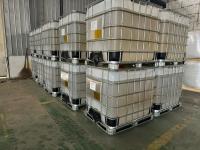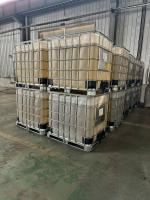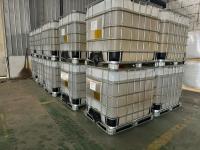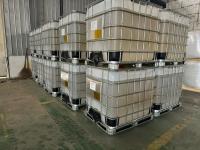Polyamines are a diverse group of organic compounds characterized by the presence of two or more amino groups. These functional groups lend polyamines unique chemical properties, such as high reactivity and the ability to interact strongly with a wide range of materials. As a result, polyamines have been widely adopted in numerous industrial and scientific applications. Among the various uses of these compounds, the primary and most significant application is in the curing of epoxy resins. Epoxy resins are versatile thermosetting polymers that find use in coatings, adhesives, composite materials, and many other high‐performance applications. The reaction between polyamines and epoxide groups leads to the formation of a robust, cross‐linked polymer network with excellent mechanical strength, thermal stability, and chemical resistance. This foundational process underpins critical technologies in sectors such as aerospace, automotive, electronics, construction, and marine industries, making polyamines indispensable in modern material science.
At the heart of the epoxy resin curing process is a chemical reaction between the epoxide groups present in the resin and the nucleophilic amine groups found in polyamines. During curing, the lone pair electrons on the nitrogen atoms in the polyamine molecules attack the electrophilic carbon atoms of the epoxide rings, leading to ring opening and the subsequent formation of strong carbon–nitrogen bonds. This reaction is exothermic, releasing heat as it progresses, and it gradually builds a three-dimensional cross-linked network. The density and structure of the network can be finely tuned by selecting polyamines with different molecular architectures, such as linear, branched, or cyclic structures. Moreover, the choice of polyamine influences the kinetics of the curing process, allowing manufacturers to control the cure time and the final physical properties of the epoxy system. For instance, using a polyamine with a higher number of active amine sites can result in a faster curing process and a more tightly cross-linked polymer matrix, which often translates into enhanced mechanical strength and chemical resistance. This level of control is critical in industries where the performance of the final product is paramount, such as in aerospace applications where materials must withstand extreme conditions.
One of the most notable benefits of employing polyamines as curing agents in epoxy resin systems is the remarkable degree of customization they offer. The chemical structure of a polyamine can be precisely selected to yield a curing profile that suits the specific requirements of an application. For example, in the production of structural adhesives used in the automotive and aerospace industries, a rapid cure time is often necessary to meet production deadlines and ensure the formation of a strong bond. In these cases, polyamines with multiple reactive amine groups are preferred because they facilitate quick cross-linking and yield adhesives with high bond strength and durability. In contrast, applications that require a longer working time, such as large-scale composite manufacturing or intricate electronic assemblies, may benefit from polyamines with a more controlled reactivity. This ability to fine-tune the curing process not only enhances the performance of the final product but also improves processing efficiency and reduces energy consumption during manufacturing. The optimization of curing profiles through the careful selection of polyamines has, therefore, played a critical role in advancing modern manufacturing techniques, contributing to the development of materials that are both high-performing and cost-effective.
The industrial utilization of polyamine-cured epoxy resins has far-reaching implications for both economic performance and environmental sustainability. The durability and resilience of these materials mean that products and structures made from them often enjoy extended service lives, reducing the frequency of repairs and replacements. This longevity is particularly beneficial in infrastructure and transportation sectors, where maintenance downtime can lead to significant economic losses. Furthermore, the efficient curing process enabled by polyamines minimizes the energy requirements during production, contributing to lower overall manufacturing costs and a reduced carbon footprint. Innovations in polyamine formulations have also led to improvements in processing, allowing for lower viscosity mixtures and extended pot life. Such characteristics are essential for complex manufacturing processes, where precision and flexibility are required. As global industries continue to evolve, there is an increasing emphasis on developing materials that not only meet performance demands but also align with environmental regulations and sustainability goals. In this context, the role of polyamines extends beyond mere chemical functionality; they are a key factor in enabling the production of advanced materials that support a greener, more efficient industrial future. The continued research and development of polyamine chemistry promise further enhancements in the performance of epoxy systems, fostering innovations that could lead to even greater energy savings, improved material properties, and expanded applications across various sectors.
In summary, while polyamines are employed in a variety of applications ranging from corrosion inhibition to water treatment and even in certain biotechnological processes, their most critical role is in the curing of epoxy resins. The reaction between polyamines and epoxide groups is a cornerstone of modern polymer chemistry, enabling the creation of materials that combine strength, durability, and chemical resistance. These epoxy systems are essential in high-performance applications where material reliability is non-negotiable, such as in aerospace components, automotive adhesives, electronic encapsulants, and advanced composite structures. The ability to manipulate the chemical structure of polyamines offers a unique degree of control over the curing process, allowing engineers and scientists to tailor the properties of the final product to meet very specific performance criteria. This not only leads to improvements in product quality and longevity but also contributes to greater efficiency and sustainability in manufacturing practices. As the demands of modern industry continue to evolve, the role of polyamines in epoxy resin curing is expected to remain a critical area of focus. Ongoing research into new polyamine formulations and curing techniques promises to further enhance the performance of epoxy systems, paving the way for innovative applications and more sustainable industrial practices. Ultimately, the main application of polyamines in epoxy resin curing underscores their indispensable contribution to the development of advanced materials that drive technological progress and support the infrastructure of the modern world.
Ideally, the continued exploration of polyamine chemistry will unlock even greater potential in polymer science, ensuring that these versatile compounds remain at the forefront of industrial innovation for future applications.






